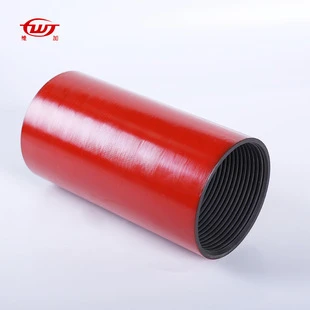- Afrikaans
- Albanian
- Amharic
- Arabic
- Armenian
- Azerbaijani
- Basque
- Belarusian
- Bengali
- Bosnian
- Bulgarian
- Catalan
- Cebuano
- Corsican
- Croatian
- Czech
- Danish
- Dutch
- English
- Esperanto
- Estonian
- Finnish
- French
- Frisian
- Galician
- Georgian
- German
- Greek
- Gujarati
- Haitian Creole
- hausa
- hawaiian
- Hebrew
- Hindi
- Miao
- Hungarian
- Icelandic
- igbo
- Indonesian
- irish
- Italian
- Japanese
- Javanese
- Kannada
- kazakh
- Khmer
- Rwandese
- Korean
- Kurdish
- Kyrgyz
- Lao
- Latin
- Latvian
- Lithuanian
- Luxembourgish
- Macedonian
- Malgashi
- Malay
- Malayalam
- Maltese
- Maori
- Marathi
- Mongolian
- Myanmar
- Nepali
- Norwegian
- Norwegian
- Occitan
- Pashto
- Persian
- Polish
- Portuguese
- Punjabi
- Romanian
- Russian
- Samoan
- Scottish Gaelic
- Serbian
- Sesotho
- Shona
- Sindhi
- Sinhala
- Slovak
- Slovenian
- Somali
- Spanish
- Sundanese
- Swahili
- Swedish
- Tagalog
- Tajik
- Tamil
- Tatar
- Telugu
- Thai
- Turkish
- Turkmen
- Ukrainian
- Urdu
- Uighur
- Uzbek
- Vietnamese
- Welsh
- Bantu
- Yiddish
- Yoruba
- Zulu
API Tubing and Casing Specifications for Oil and Gas Applications
Understanding API Tubing and Casing A Comprehensive Guide
In the oil and gas industry, the integrity and reliability of drilling operations are paramount. Central to these operations are the concepts of tubing and casing, which serve as vital components in the production of hydrocarbons. The American Petroleum Institute (API) provides standardized specifications for these materials, ensuring safety, performance, and compatibility across different drilling projects. This article delves into the API tubing and casing chart, illustrating its significance in the industry.
What is Tubing?
Tubing refers to the pipe through which oil and gas are transported from the well to the surface. It is a critical element in managing the flow of hydrocarbons and must be capable of withstanding high pressures and corrosive environments. API tubing is categorized based on its diameter and wall thickness, with specific grades designed for various pressure and temperature conditions.
Tubing is often manufactured from carbon steel and is rated according to its strength and ability to resist environmental factors. The API defines tubing specifications using a series of grades—commonly, T, J, and H, which represent different strength and weight classifications. These grades help operators select the appropriate type of tubing based on the conditions encountered in their drilling operations.
What is Casing?
Casing, on the other hand, refers to the pipes that line the drilled hole to protect the wellbore from collapsing and to isolate different underground formations. The casing is installed after the drilling process, and its primary purpose is to prevent the influx of water, gas, and other materials, providing a safe pathway for the extracted hydrocarbons.
api tubing and casing chart

Just like tubing, casing is classified by size and rated according to its strength and resistance to environmental conditions. The API casing specifications are also critical for ensuring a secure well design, which can significantly impact the overall success of a drilling project.
The API Tubing and Casing Chart
The API tubing and casing chart is a comprehensive reference that illustrates various specifications regarding size, weight, and material composition for both tubing and casing. This chart is essential for engineers and drilling professionals, as it provides valuable information to ensure the right materials are selected based on the parameters of a specific drilling site.
One key feature of the chart is its categorization of different grades based on tensile strength and yield strength. For example, higher-grade materials can withstand greater pressures and are typically used in deeper wells where the risk of failure is higher. Conversely, lower-grade materials may be sufficient for shallower operations.
Besides these specifications, the chart also includes information regarding the dimensions of the pipes, including outside diameter (OD), wall thickness, and weight per unit length. This information is crucial for determining the compatibility of casing and tubing with other system components, as well as for planning the logistics of transporting and installing these materials.
Conclusion
In conclusion, the API tubing and casing chart plays a fundamental role in the oil and gas industry by providing vital specifications that guide the selection and use of tubing and casing materials. Understanding these guidelines is essential for engineers and operators to ensure the safety and efficiency of drilling operations. As the industry evolves and new challenges emerge, adherence to API standards will continue to be critical in maintaining the integrity of well operations and maximizing hydrocarbon recovery. Whether dealing with new drilling projects or evaluating existing wells, a thorough knowledge of tubing and casing specifications can significantly impact success in the field.
-
Tubing Pup Joints: Essential Components for Oil and Gas OperationsNewsJul.10,2025
-
Pup Joints: Essential Components for Reliable Drilling OperationsNewsJul.10,2025
-
Pipe Couplings: Connecting Your World EfficientlyNewsJul.10,2025
-
Mastering Oilfield Operations with Quality Tubing and CasingNewsJul.10,2025
-
High-Quality Casing Couplings for Every NeedNewsJul.10,2025
-
Boost Your Drilling Efficiency with Premium Crossover Tools & Seating NipplesNewsJul.10,2025







